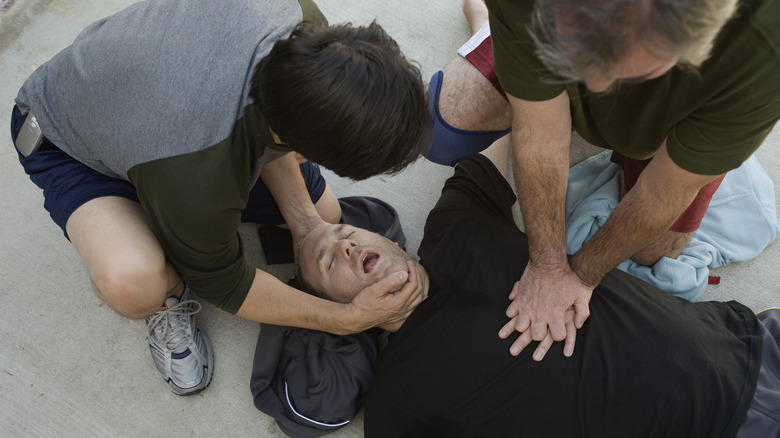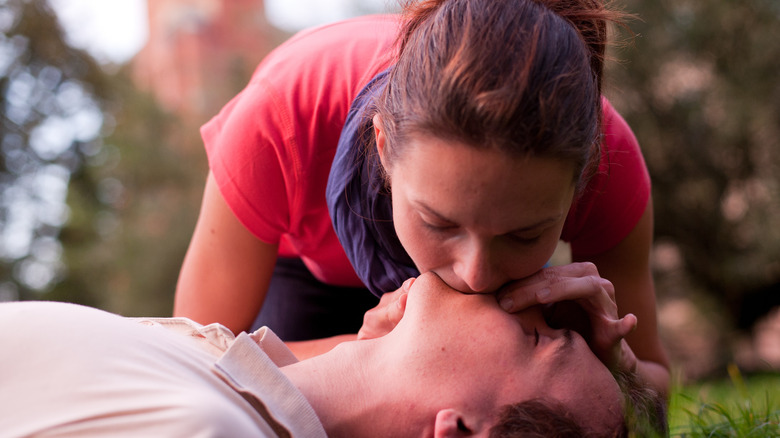Is Mouth To Mouth Necessary In CPR?
Whether you've seen it being performed in person or you know how to do it yourself, cardiopulmonary resuscitation (CPR) is a critical procedure that can potentially save a person's life. In an emergency, performing CPR when a person's heart stops beating can double or triple the odds of survival. When people hear the acronym, they typically envision a mouth-to-mouth procedure that is combined with applied pressure on the chest, but is mouth-to-mouth necessary?
This version of resuscitation is sometimes referred to as rescue breathing. It works by forcing air into the affected individual's lungs, who may no longer be breathing on their own. This might be due to an object lodged in their airway, cardiac arrest, or a different medical emergency. While the mouth-to-mouth approach is one way that rescue breathing can be executed, rescue breaths can also be exhaled into the nose of the impacted individual. When possible, a barrier of protection can be used between the two people during the rescue process.
However, there has been some confusion as to whether mouth-to-mouth rescue breathing is a necessary part of CPR. As the American Heart Association clarified in its 2010 report published in Circulation, rescue breathing is best when carried out by trained individuals.
Should mouth to mouth be avoided altogether during CPR?
When the 2010 report from the American Heart Association (AHA) was published in Circulation, alterations were made to the guidelines for performing CPR. At the time, HSI states that many people mistakenly thought that rescue breathing was no longer recommended altogether.
As the AHA noted, its recommendations were based on an extensive review of the International Liaison Committee on Resuscitation's (ILCOR) International Consensus on CPR and ECC Science With Treatment Recommendations, which was also published in Circulation in 2010. The data stemmed from an evaluation process, conducted by 356 resuscitation experts from 29 countries over the course of 36 months. In the end, they determined that chest compression should now be the primary focus when performing CPR, followed by freeing the affected individual's airway and rescue breathing. This came after the experts concluded that many bystanders often feel hesitant to perform CPR, knowing that it typically begins by focusing on freeing the airway. However, the AHA did not eliminate the potential need for mouth-to-mouth resuscitation as a part of CPR.
Going from 'ABC' to 'CAB'
The acronym, "ABC," was originally popularized to help people remember what to do during CPR, as well as the order in which to execute the procedure — airway ("A"), breathing ("B"), and chest compressions ("C"). The 2010 report published in Circulation, detailing the altered guidelines from the AHA, reversed this acronym to reflect what bystanders should be focused on — "CAB." However, the letters still represent the same actions needed to properly carry out CPR.
Chest compressions should be the action that bystanders initially execute if they are untrained in CPR, according to the AHA. It is easier to perform without training, and it can also be explained in more simple terms by dispatchers who may be helping via phone. Chest compressions also referred to as hands-only CPR, should be the main form practiced by the general public and untrained individuals. Trained individuals can use chest compressions and mouth-to-mouth rescue breathing at a ratio of 30-2 (compressions-to-breaths).



